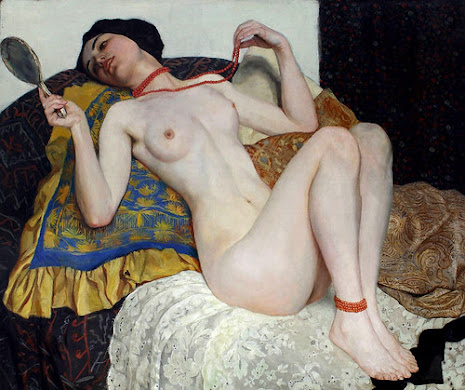"Cashmere" and his nieces, Rose-Marie and Reine Ormond
"Cashmere", 1908, John Singer Sargent, The painting is of Sargent's niece, Reine Ormond, in an exotic cashmere shawl in seven different poses. Reine Ormond would have been about 11 years old. Shawls came to be considered the exclusive domain of married women.
Two Girls Fishing, 1912
A painting of Sargent's two nieces: Rose-Marie and Reine Ormond, during their trip to the French Alps in 1912 when, according to the Cincinnati Art Museum, they all were staying in the village of Abriès. The two girls are perched on the side of an eddy from the cold snow-melt of a mountain stream. They sit crouched, partly on rocks, in the quiet contemplation of fishing. The pose is so organic to any family trip -- you can sense its honesty. Drawn into its participation, as if WE, the viewer, are the girls' uncle. Each, presumably, had Sargent bait their hook, and can't you feel their calmness knowing that he's right there painting them from the grassy bank behind -- available to help in the event of a squirming dripping scaly catch?
Two Girls in White Dresses, 1909-11
Sargent imagined mirrored images of his niece Rose-Marie reclining in an Impressionistic swirl of ivory taffeta and paisley, while in Nonchaloir (Repose), 1911, at the National Gallery of Art in Washington, D.C., she sinks back into a sofa, the paisley pattern reproduced in the rich green upholstery. But the most spectacular Sargent painting to make use of the design is Cashmere, circa 1908, where seven different versions of Rose-Marie’s younger sister Reine extend across the canvas wrapped and draped in the shawl (in December 1996 at Sotheby’s in New York, Cashmere sold to a private collector for a then-record-breaking $11.1 million).







Comments
Post a Comment